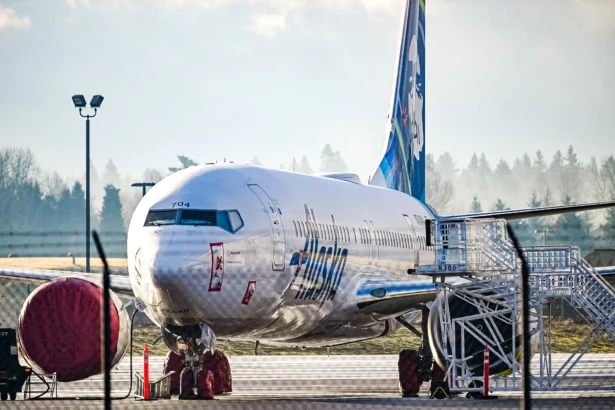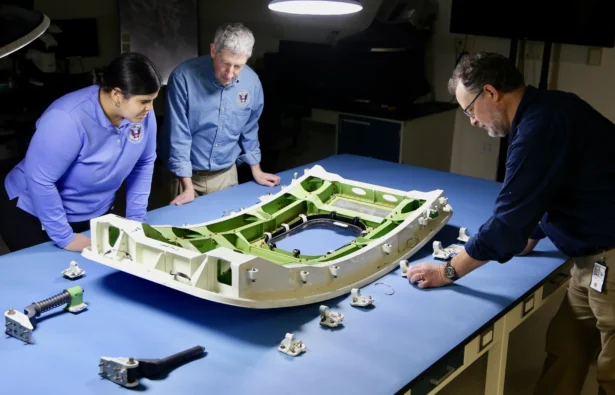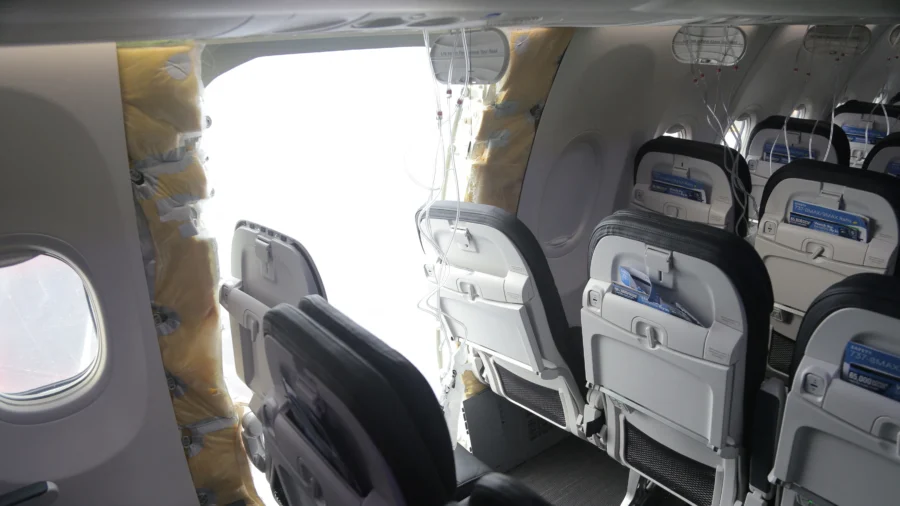More passengers who were aboard an Alaska Airlines Boeing 737 MAX jet when part of its fuselage blew out in January are suing.
Seven passengers filed a lawsuit in Washington’s King County Superior Court on Thursday against Boeing, Alaska Airlines, Spirit AeroSystems, and 10 people listed as John Does.
One of the complainants, Cuong Tran, of Upland, California, was sitting in the row behind where a “plug” or side panel of the aircraft tore away and left a door-sized hole on Alaska Airlines Flight 1282 on Jan. 5, causing instant decompression.
According to a news release from attorney Timothy A. Loranger, who filed the lawsuit, air rushed out of the hole, tearing Mr. Tran’s shoes and socks from his feet.
The passenger felt his body lift off his seat, the news release said, adding that his foot was hurt when it was jerked against the back of the seat in front of him.
“Our clients—and likely every passenger on that flight—suffered unnecessary trauma due to the failure of Boeing, Spirit AeroSystems, and Alaska Airlines to ensure that the aircraft was in a safe and airworthy condition,” Mr. Loranger said.
The lawsuit seeks punitive, compensatory, and general damages for alleged negligence, product construction/manufacturing defect liability, and failing in its duty to protect passengers from harm.
“We have nothing to add,” Boeing responded to an email seeking comment.
Safety experts have said the accident could have been catastrophic if the Alaska jet had reached cruising altitude: the force of decompression would have been higher, and passengers and crew would have had their seatbelts unlocked.
Another lawsuit was filed last month on behalf of 22 other passengers on the flight, accusing Boeing and Alaska Airlines of negligence.

Missing Work Records
Alaska Airlines Flight 1282 to California’s Ontario International Airport took off from Portland, Oregon, on Jan. 5 when about halfway to its cruising altitude—and traveling at more than 400 mph—a door-sized side panel blew out.
Pilots were able to make a successful emergency landing at Portland without serious injuries.
In a preliminary report last month, the National Transportation Safety Board (NTSB) said that the four main bolts that help keep the panel in place, in addition to 12 smaller fasteners, were removed in September to allow workers to repair nearby damaged rivets.
The panel landed in a backyard in a Portland suburb, but the NTSB was unable to retrieve the four bolts that hold the panel in place, casting doubts about whether they had been reinstalled after their removal.

The repairs on the rivets were done by contractors working for Boeing supplier Spirit AeroSystems, who also supplied the panel, which was manufactured according to engineering standards according to the NTSB investigation.
Boeing, under increased scrutiny since the incident, has acknowledged in a letter to Congress that it cannot find records for work done on the door panel of the Alaska Airlines plane, despite company rules requiring such documentation.
In addition to Congress, the Department of Justice has now launched a criminal investigation to review whether the plane builder has fully complied with the terms of a 2021 settlement following two deadly crashes attributed to faults in Boeing’s 737 MAX Maneuvering Characteristics Augmentation System.
On Monday, the U.S. Federal Aviation Administration (FAA) said it had identified “non-compliance issues in Boeing’s manufacturing process control, parts handling and storage, and product control.”
Boeing’s Safety Culture ‘Lacking’
An investigation that concluded last month but was launched before the blowout incident led the FAA to conclude that Boeing’s safety culture was lacking. The report mentioned employees harbored fears of retaliation for reporting safety concerns—an issue the NTSB addressed on Wednesday in a letter to Congress.
“I have become increasingly concerned that the focus on the names of individual front-line workers will negatively impact our investigation and discourage such Boeing employees from providing NTSB with information relevant to this investigation,” NTSB chairwoman Jennifer Homendy wrote.
“To that end, I have instructed NTSB to utilize our authority to protect the identities of the door crew and other front-line employees who come forward with information relevant to the investigation.”
The Associated Press contributed to this report.


